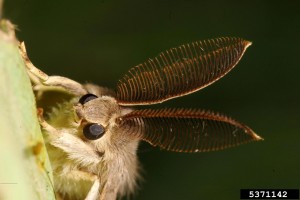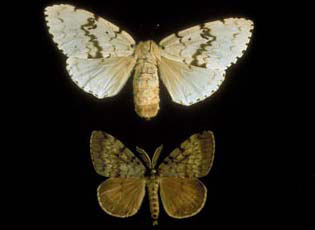FORESTRY
IN SOUTH DAKOTA
Lymantria dispar
Lymantria dispar, are defoliators and they prefer to feed on poplar, oak, willow, and basswood species. They will also feed on other species, but they do tend to avoid ash, balsam fir, butternut, black walnut, red cedar, flowering dogwood, sycamore, yellow or tulip poplar and shrubs such as mountain laurel.
Sometime between 1868 and 1869 European Lymantria dispar were accidentally released in Massachusetts by French scientist, E. Leopold Trouvelot, after a failed attempt of trying to utilize them for silk production. Lymantria dispar egg masses can be transported to South Dakota on any items that are stored outdoors and can be moved. For example, people relocating to South Dakota and moving all of their lawn furniture.
Small populations can be kept in check by predator birds, insects, and possibly small mammals until a major outbreak occurs. In the past and present years, Lymantria dispar adults have been collected from Lymantria dispar traps in South Dakota. However, the population isn’t large enough to sustain itself at a level where it will become an issue. Lymantria dispar larvae can be found in groupings of around 5, or 6, but also in masses with 50 or more larvae on a tree. Larvae will continuously eat in large groups. Lymantria dispar larva are easy to identify by looking for the 12 red dots and 10 blue dots on their abdomen.

Lymantria dispar larva, Jon Yuschock, Bugwood.org

Male Lymantria dispar, Gyorgy Csoka, Hungary Forest Research Institute, Bugwood.org

European Lymantria dispar, Female (top) and male (bottom), USDA, APHIS, Plant Protection and Quarantine Archives